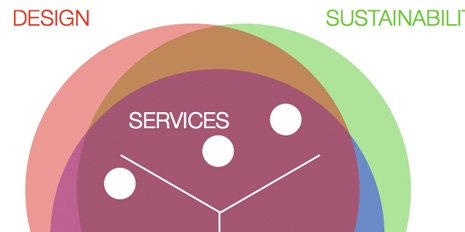
Design, Sustainability, Business, Systems, Meaning - according to Nathan Shedroff, they're all there.
“If you’re not part of the problem, you can’t be part of the solution”. Beginning with that quote from a friend of Adam Kane, Nathan Shedroff led a fast-paced and wide ranging talk on sustainable design at Auckland's Unitec New Zealand Mt Albert campus on Tuesday 13th of July.
Shedroff has the unusual combination of having worked and written about experience design, meaning in business and even sci-fi interfaces as well as sustainable design, giving his talk an interesting mix of approaches (in fact, he gave a range of presentations across the country focusing on different aspects of his knowledge). His talk at Unitec was based largely on his book Design is the Problem, but built on his previous talks in this area by more fully discussing systems and service design. (His slides aren't up as of yet, but a lot of the relevant resources are available at http://nathan.com/thoughts).
Hummers and Coffee Cups
One of the key points Shedroff drove home was the importance of appropriate measures and metrics (or, for those in interaction design, the IXD mantra "it depends"). For example, a study comparing the level of sustainability between a Prius and Hummer isn’t as clear cut as one may assume, for while the Hummer may have higher fuel costs, it conversely uses more common materials, less heavy metals and is potentially easier to dispose of.
Similarly, the argument of paper versus ceramic coffee cups depends on scale as the balance tipping point at which ceramic becomes more viable is at 70 cups.
Capital and Systems
Shedroff translates the typical triple bottom line model into one of human, financial and social capital (and wryly notes "if you frame things with the word 'capital', the businesspeoples' ears perk up")
In translating this into a design perspective, Shedroff says that "it's no longer possible to be concerned only with design, sustainability or business without understanding the other two." He lists a large range of skills with these such as design thinking and market economics, but more importantly:
"In the centre of design, sustainability, and business is .... experience ... and in that, meaning. With this also comes services and systems"
Systems thinking (Shedroff recommends "Thinking in Systems" by Donella Meadows as a great primer, and notes that there is a lot more work on services happening in the UK than US) comprises of:
As alluded to earlier, Shedroff explained that it's imporant to think about the service being delivered (e.g. coffee) rather than the artifact. However, he pointed out “the hardest thing about systems thinking is knowing when to stop”. Shedroff suggested the rule of thumb for thinking about a system is to move 2-3 times out from the artifact that you are working with.
Frameworks and Strategies
Shedroff gave a quick overview of some of the major sustainability frameworks available:
Some strategies were:
Shedroff finished with throwing the design kitchen sink (!) at all:
Linkroll:
CNW's 'Dust to Dust' Automotive Energy Report http://cnwmr.com/nss-folder/automotiveenergy
LCA study on music delivery (CD vs iTunes) http://bit.ly/CKQDs (PDF)
"Thinking in Systems" by Donella Meadows http://amzn.to/aUUy9t
Design is the Problem http://bit.ly/dguVYf
Total Beauty system by Edwin Datschefski http://bit.ly/daFSrk
"The Total Beauty of Sustainable Products" Edwin Datschefski http://amzn.to/cPadOb
Architecture for Humanity Open Architecture Network http://bit.ly/cupAJX
Kalundbord, Denmark industrial ecology http://www.symbiosis.dk/
Rickshaw Zero bags are designed for disassembly http://www.rickshawbags.com/
Notes: Most of these notes are compiled from my live-tweets of the talk. All screenshots taken from PDFs from http://nathan.com/thoughts . Also check out the pre-Interaction10 interview with Shedroff.
Comments
Thanks for posting Vicki.
thanks Locus chums - felt
Post new comment